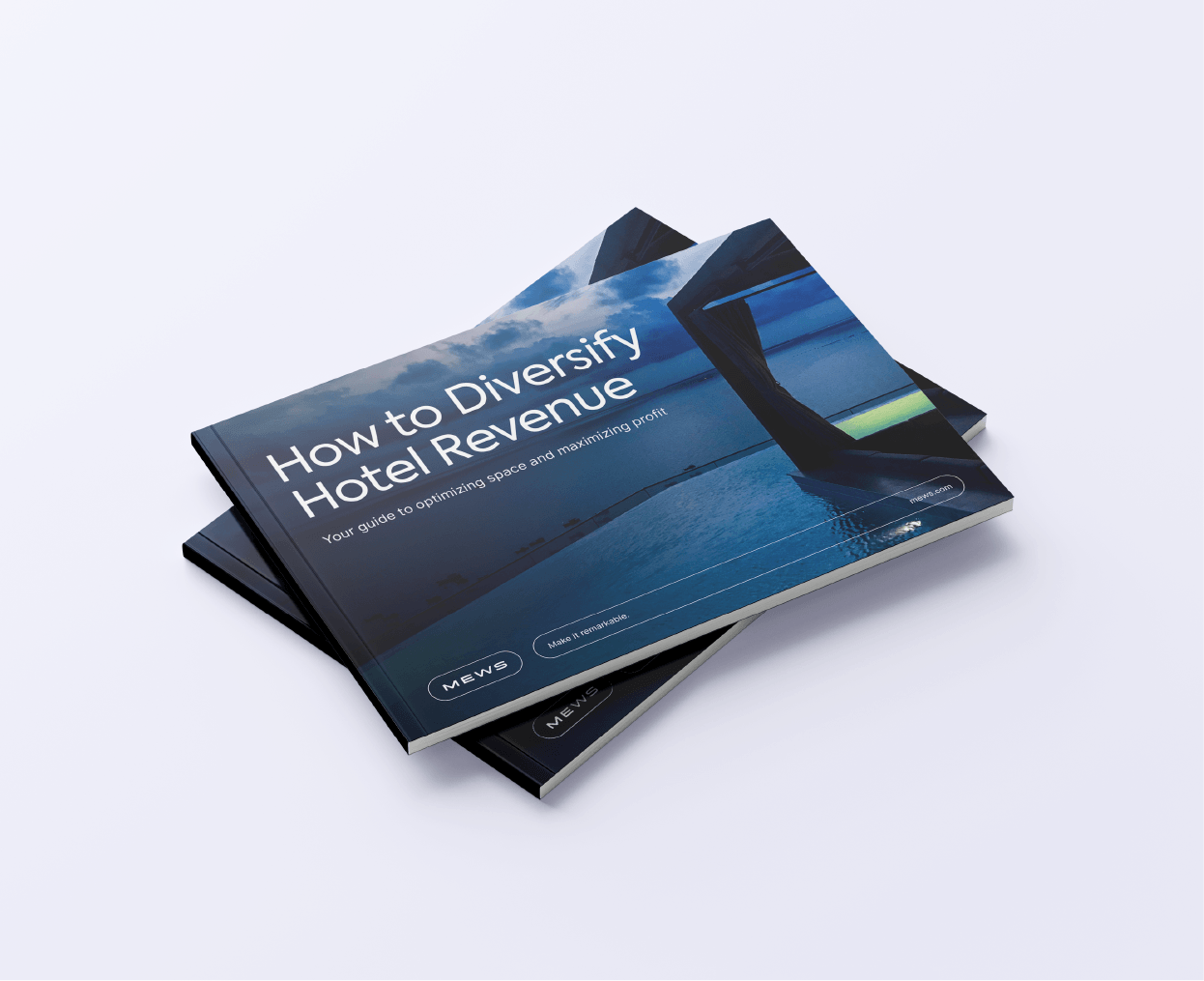When it comes to designing the perfect POS menu to facilitate digital ordering at your hotel’s restaurant, there are a lot of things to keep in mind. The perfect menu is the combination of making smart design choices that make the menu easily digestible, but it should also incorporate attractive language that makes the food appealing and incentivizes guests to order more.
Why does a menu matter? Because a well-functioning hotel restaurant is key to boosting your hotel’s bottom line by opening up an alternative revenue stream to pure room sales. So, let’s take a look at how to use a hotel restaurant POS system to create the ideal menu and boost your profits.
Table of contents
How to use a POS systems to create the perfect restaurant menu
Having a good menu design at your hotel’s restaurant is not a coincidence. It involves careful thought in order to positively influence guest behavior and encourage upselling with attractive beverages, side dishes, salads and appetizers. Let’s take a look at some tips for creating perfect hotel restaurant menus with your POS.
Discover the most popular dishes
You can use your POS to get insight into the menu and the best performing dishes. It’s important to understand what are your most popular dishes for several reasons: it allows you to place them properly on the list, to create special add-ons in order to boost the price per item, and helps you decide what temporary items to make permanent.
Use your learnings about most popular dishes for better menu item placement
Once you’ve discovered what the most popular dishes are, you can make better-informed decisions about where to place less popular items that you want to push due to low food cost and high profitability. The most readable items are usually found within an inverted triangle. Those items within the triangle by default tend to be more popular because they are more easily found.
If you find that a certain item is not selling well, you can experiment by putting it in a more readable place. If that doesn’t work, then you can consider getting rid of that item entirely.
Use the top menu items to refresh your menu
Understanding your top items with the help of your POS is also key for implementing a refresh of your restaurant’s offering. You can assess which items are not performing well even after moving them to the inverted triangle, and reinvent them based on the learnings about what items do perform well. If you find that a seasonal dish was very popular, you can make it a regular dish.
You can also use these learnings to refresh your offering by placing dishes in a different order or highlighting them somehow by calling them “favorites” “specials” or “chef’s choice”. This is a subtle way of influencing customer behavior so that they order the less popular items. Find out how to use product content to influence customer behavior.
Discover when sales are the highest
You can use your POS to discover when your hotel’s restaurant performs the best so that you can cater your strategy for optimizing profits. This could be optimizing costs by having less staff on duty during the slow times, or it could be designing special promotions like “Happy Hour” or “two for one burgers” during those slow times.
If you discover that one night of the week in particular is consistently slow, you may consider closing that night or trying to drive sales by putting on a free concert or a thematic night like “taco Tuesdays” or “Hump day drinks”. All of these strategies may help boost sales and make the right decisions in order to maximize profits.
Use the food cost report to know when to upsell and when to scale back
Once you’ve discovered which items have the highest food cost, consider using upselling strategies. One such upselling strategy could be offering add-ons to ramp up the profit for these higher cost dishes. For example, if a burger has a high food cost, you may consider offering customizable options such as extra cheese, avocado, caramelized onions or sweet potatoes to ramp up the price you get for that item and make it more profitable.
Upsell on the high food cost items and understand when to scale back on the amount of dishes you’re offering. Too many choices can slow down your table turnover and lower your profits because you have to have more ingredients on hand. Think of the popular saying “less is more”. Find the right balance between enough dishes to satisfy a wide audience, but not so many that the average audience is overwhelmed.
Cater to guests with special food needs
Use the digital ordering functionality from your POS to allow the possibility to filter for allergens and vegetarian options. Being able to easily spot the dishes that they can and cannot eat is great for creating an optimal guest experience at your hotel’s restaurant because it shows you cater to all needs.
Use categories to optimize design
By looking at the sales report that your POS generates, you’ll be able to determine which are the most popular items by category, whether that be appetizers, drinks, main dishes, or sides. You can then rearrange your offering so that the more popular items are placed next to the less popular items, or create a combo or wine pairing so that you will be more likely to sell the less popular item when paired up with the popular one and/or with a drink.
You can even create a tasting menu easily by allowing guests to choose one dish from each category and charging a reduced total amount when ordered together. This ensures that guests order more and that the average spent per bill is higher because with a tasting menu people tend to order more than they generally would.
Implement different options for different areas
Once you dive into the report of sales by area from your POS, you can get an idea of which areas are performing better, and customize the offering accordingly. For example, if you find people don’t consume much at the bar in terms of food, consider offering a discount if they order some appetizers with their drinks. You can even create a highlighted section for your underperformers, calling them “the best of the patio” or “Dining room specials”.
Conclusion
In this article, we’ve looked at how you can use your POS menu to help optimize and create the best hotel restaurant offering. A hotel restaurant is a great way to boost ancillary revenue and make it possible to earn from additional revenue sources even in periods of low demand. Utilize the reports from your POS to fine-tune your restaurant’s offering and ensure maximum profitability.
Looking for more opportunities to diversify – and grow – your hotel revenue?
Download our guide "How to Diversify Hotel Revenue"


2026 Hospitality Industry Outlook
Download now
Table of contents
Hospitality hot takes straight to your inbox



.webp)
